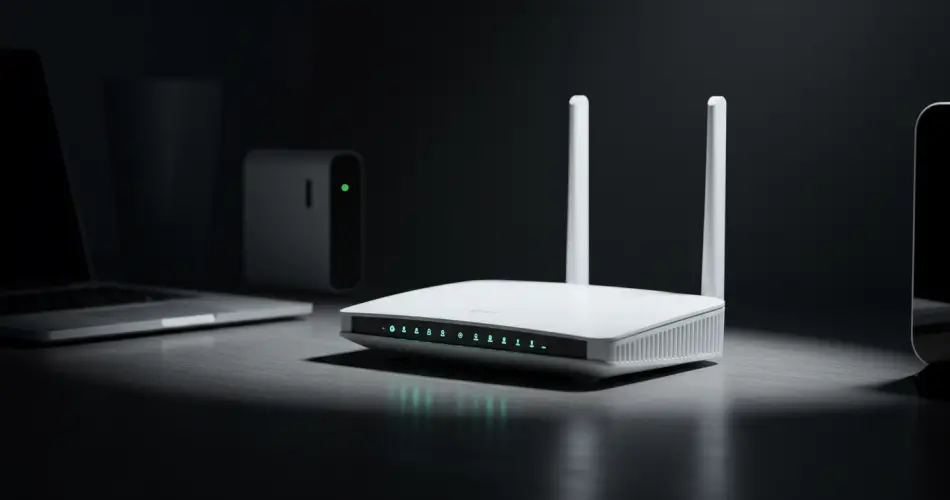In today’s world, Wi-Fi is an essential part of daily life. From working remotely and streaming movies to online shopping and video calls, a reliable internet connection has become almost as important as electricity or running water. Yet, despite its importance, many people struggle with an unstable Wi-Fi connection at home. Pages take forever to load, video calls freeze, and streaming services buffer at the worst times.
What causes these problems, and how can you fix them? In most cases, the issue isn’t with your internet service provider, but rather with the placement of your router, the layout of your home, or interference from other devices. Luckily, with a few simple adjustments, you can drastically improve the strength and stability of your home Wi-Fi.
Common Causes of Wi-Fi Problems
1. Router Location
One of the biggest reasons for weak Wi-Fi is where your router is placed. If it’s hidden in a far corner of the house or tucked behind furniture, the signal has a harder time reaching every room. Walls, ceilings, and even large household objects can act as barriers that weaken the connection.
For example, if your router is located in a room on the far side of the house, you might find that the signal barely reaches your bedroom or kitchen. Similarly, placing the router near large objects like a TV, bookcase, or wardrobe can block and absorb the signal, making it less effective.
2. Interference from Other Devices
Another common culprit is interference from electronics that use the same frequency as your Wi-Fi. Cordless phones, baby monitors, and microwave ovens often operate on the 2.4 GHz frequency band—the same as many Wi-Fi routers. When these devices are in use, they can disrupt your internet connection, slowing it down or causing it to drop entirely.
3. Overloaded Frequency Channels
Wi-Fi routers operate on channels, and if too many devices in your home—or even in your neighbors’ homes—are using the same channel, it can lead to congestion. This is especially common in apartment buildings, where multiple routers are competing for the same airwaves.
4. Too Many Connected Devices
While modern routers can handle multiple connections, overloading your network with too many devices at once can reduce speed. Smartphones, laptops, tablets, smart TVs, gaming consoles, and even smart appliances all consume bandwidth. The more devices that are connected simultaneously, the harder your Wi-Fi has to work, and the slower it becomes.
How to Improve Your Wi-Fi Connection
The good news is that most Wi-Fi issues can be solved with a few simple strategies. Here are some effective ways to boost your signal and enjoy a smoother, faster connection.
1. Place Your Router in a Central Location
For optimal coverage, position your router in a central area of your home. This ensures the signal radiates evenly in all directions, reaching more rooms. Ideally, place it in a hallway or living room rather than in a corner or basement.
Elevating the router—such as placing it on a shelf—can also help, since signals travel more freely at a higher level. Avoid hiding the router behind furniture or inside a cabinet, as this blocks the signal.
2. Minimize Interference
Keep your router away from devices that can cause interference, such as cordless phones, microwaves, and Bluetooth speakers. If possible, switch to the 5 GHz frequency band, which is less crowded and provides faster speeds, though with a shorter range.
3. Use Wi-Fi Extenders or Mesh Systems
If you live in a large house or one with thick walls, even the best router placement might not be enough. In these cases, a Wi-Fi extender or a mesh Wi-Fi system can make a big difference.
-
Wi-Fi extenders capture the existing signal and rebroadcast it to areas of your home where coverage is weak.
-
Mesh Wi-Fi systems use multiple access points placed around the house, creating a seamless network that ensures consistent coverage in every room.
Both options can effectively eliminate dead zones and improve overall signal strength.
4. Change Your Wi-Fi Channel
If your router is set to a channel that’s overcrowded, switching to a less congested channel can improve performance. Many modern routers automatically select the best channel, but you can also log into your router’s settings and make adjustments manually.
5. Limit Connected Devices
If your network feels slow, try disconnecting devices you aren’t actively using. For households with many gadgets, upgrading to a dual-band or tri-band router can help distribute the load more effectively, preventing slowdowns.
6. Keep Your Router Updated
Like any piece of technology, routers need occasional updates. Make sure your router’s firmware is up to date to ensure you’re benefiting from the latest security patches and performance improvements.
Preventive Measures for Faster Wi-Fi
In addition to these fixes, there are preventive steps you can take to keep your Wi-Fi running smoothly:
-
Restart your router regularly: A simple reboot can clear temporary glitches and refresh the connection.
-
Protect your network with a strong password: Unauthorized users can drain your bandwidth if they access your Wi-Fi.
-
Upgrade your router if it’s outdated: Older routers may not support the latest Wi-Fi standards, limiting your speed and coverage.
Final Thoughts
A weak or unstable Wi-Fi connection can be incredibly frustrating, but in most cases, the solution is simple. By repositioning your router, reducing interference, upgrading your equipment, or using extenders, you can significantly improve your home network.
Reliable Wi-Fi isn’t just about convenience—it’s about productivity, communication, and entertainment. Taking the time to optimize your setup ensures that you can work, learn, and relax online without constant interruptions.
With a few smart adjustments, you can enjoy a fast, stable connection throughout your entire home, no matter where you are.



